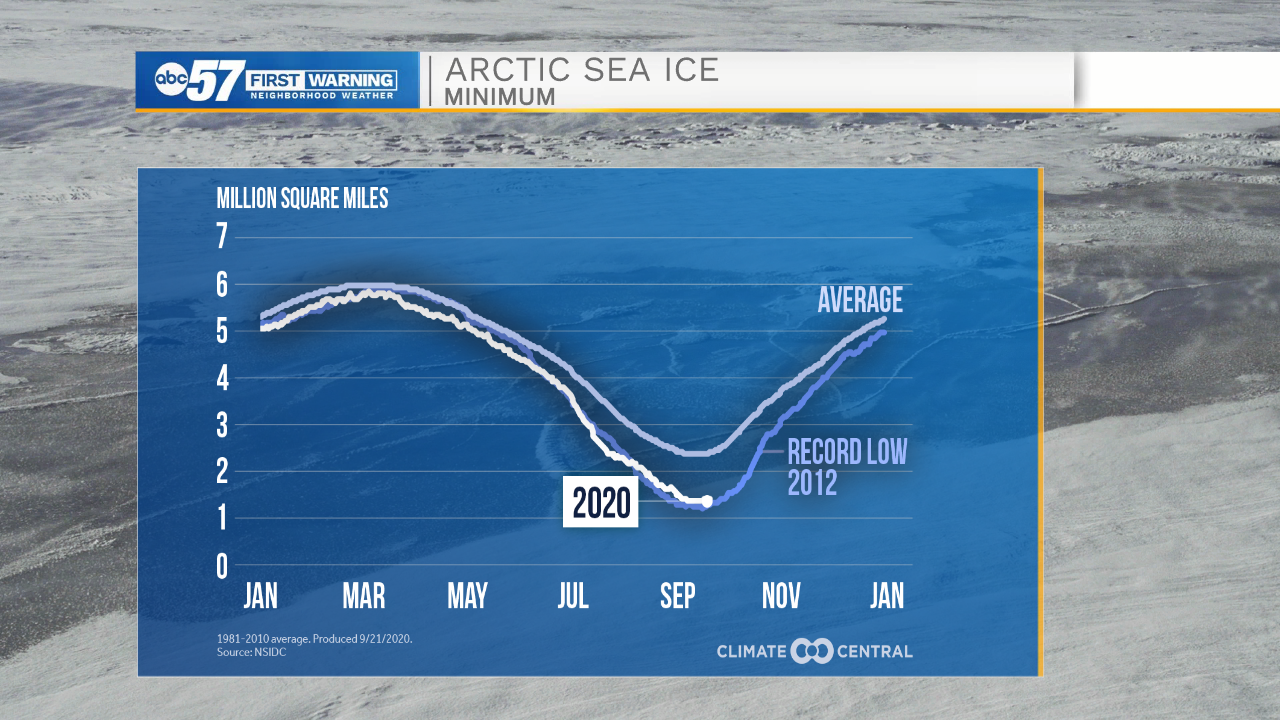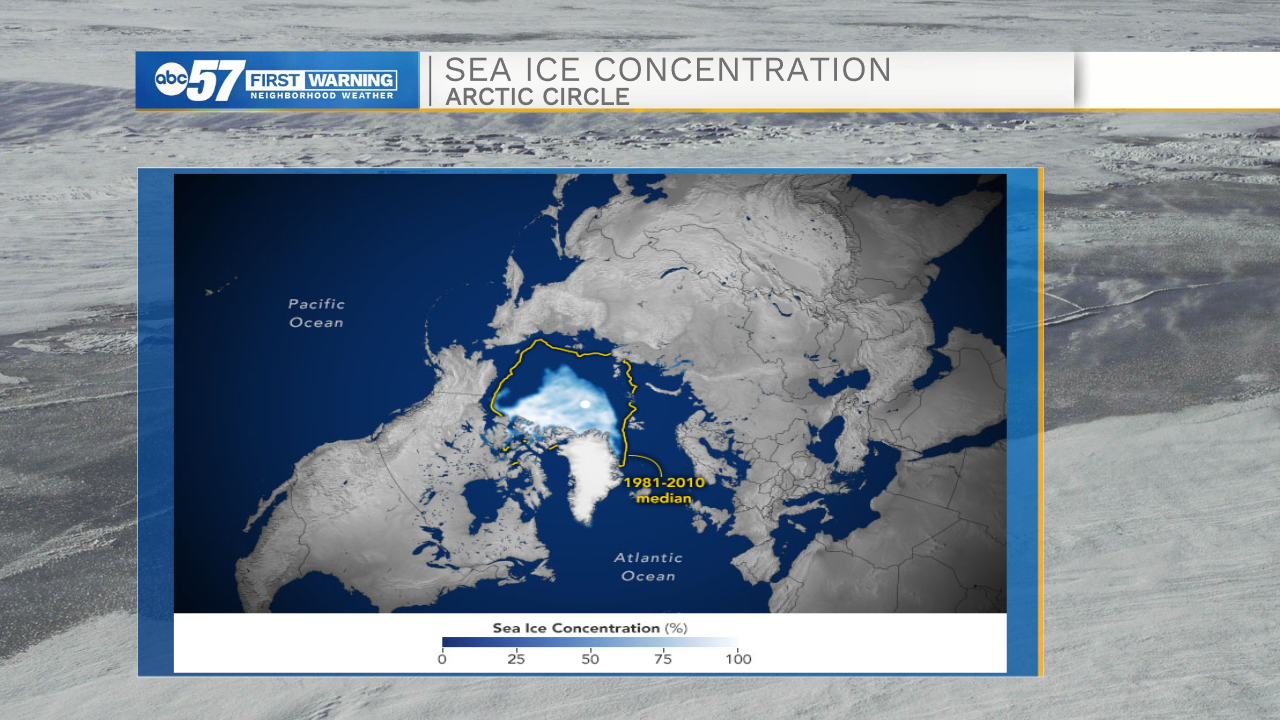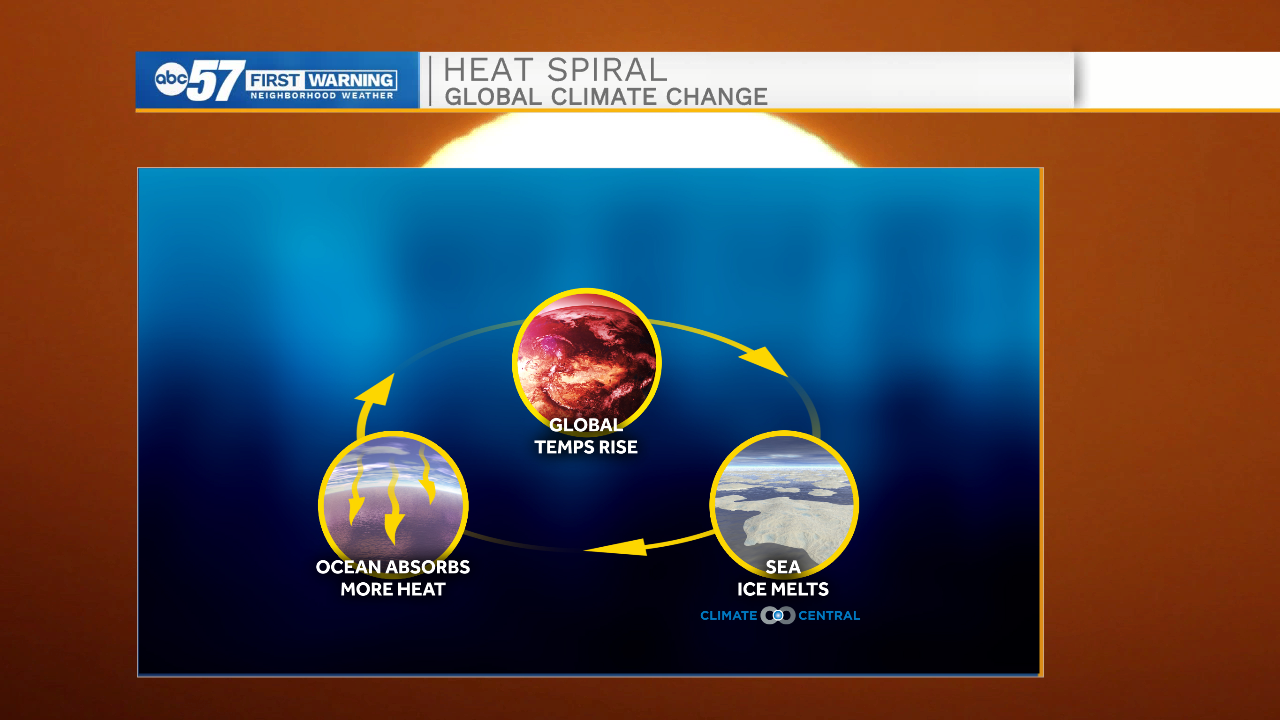
-
2:29

More than 300 turkeys distributed in South Bend through mobile...
-
2:20

A winter storm will end the Thanksgiving weekend
-
2:42

One sent to hospital following Wednesday morning plane crash...
-
1:33

What you need to know if you’re traveling by air this Thanksgiving
-
2:12

Treacherous Thanksgiving travel with snow and wind on the way
-
3:10

Local Educator expands on the impact of Nursing no longer being...
-
2:31

Cultivate and Unity Gardens filling tables with Thanksgiving...
-
3:16

Indiana and Michigan State Police share prep for holiday travel
-
0:33

Brandywine Community Schools notifies parents of fake child abduction...
-
2:35

Chris Ash says defensive success starts with staying connected
-
1:33

Potato Creek State Park staple, Naragon Barn, demolished Monday
-
2:33

Each day has different weather impact through the weekend
The effects of a historically hot summer are showing up all across the globe, including in the Arctic.
Arctic sea ice has reached its minimum extent for the year. According to the National Snow and Ice Data Center, the 2020 sea ice minimum is the second lowest in the 42-year satellite record.
With Arctic sea ice reaching its second-lowest extent, a long-term downward trend continues. https://t.co/qUgFDQ8vRR pic.twitter.com/QyOdIy4Sjj
— NASA Earth (@NASAEarth) September 23, 2020
The sea ice melted early this year thanks to a Siberian heat wave that sent temperatures in the Arctic nearly 20 degrees above average.

The 2020 Arctic sea ice minimum is nearly 1,000,000 square miles below the 30 year average.

Melting sea ice contributes to what climate scientists refer to as the "heat spiral"

When sea ice melts, it exposes more open ocean to sunlight. The darker ocean absorbs more heat, which increases global temperatures and in turn leads to more sea ice melting.

